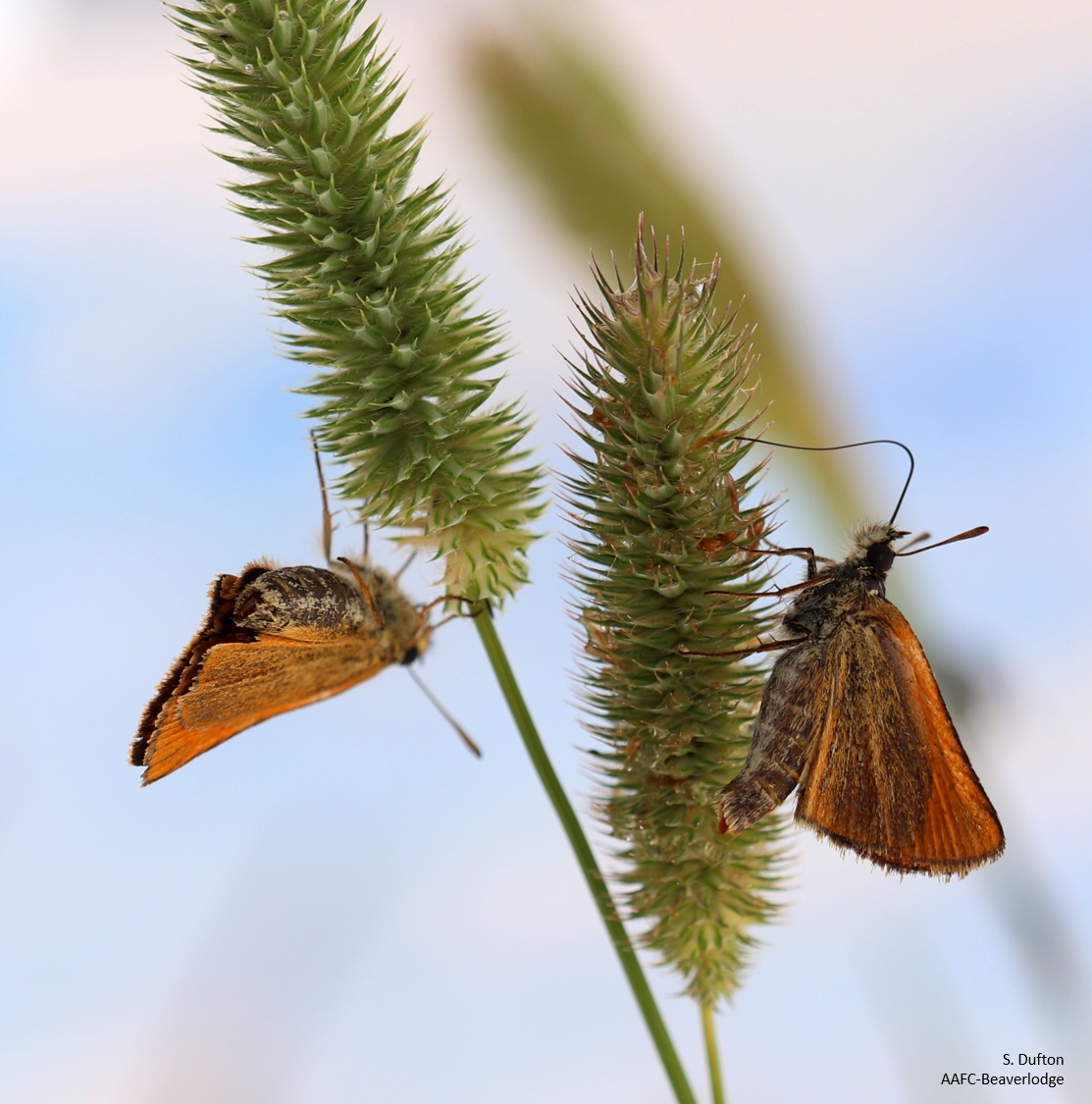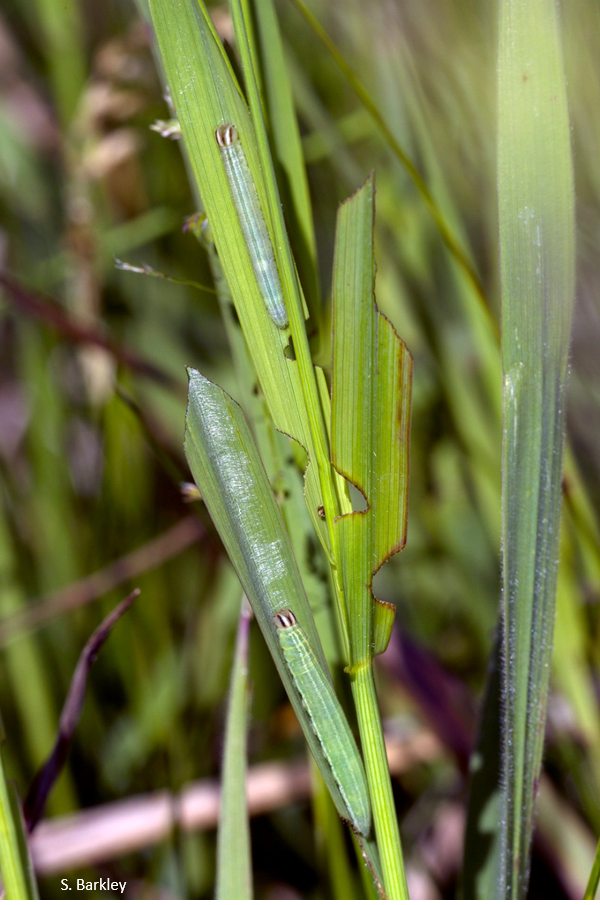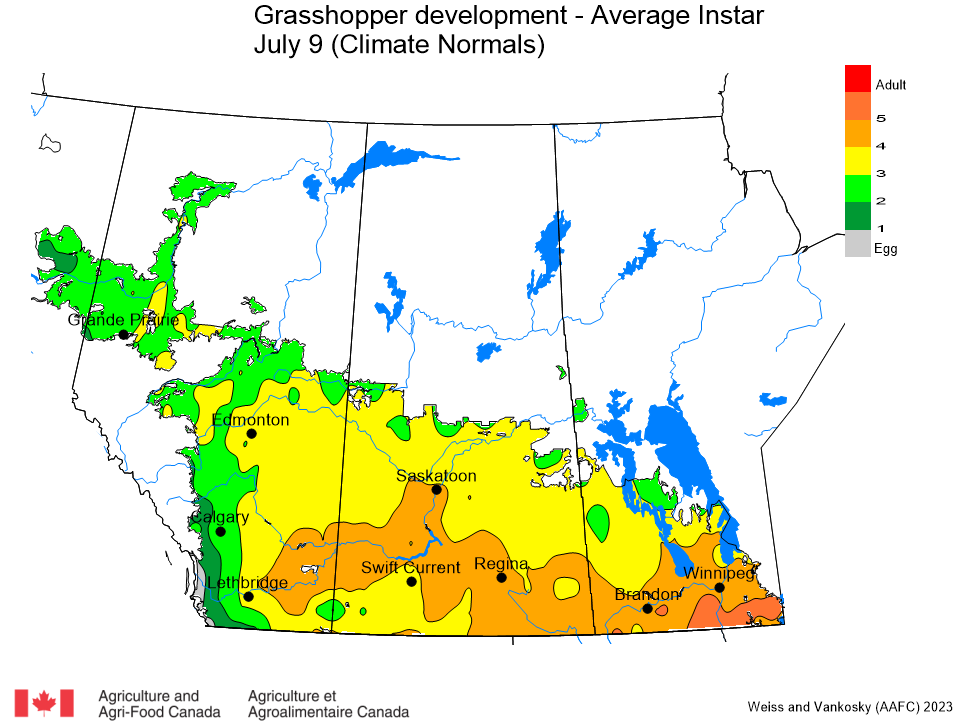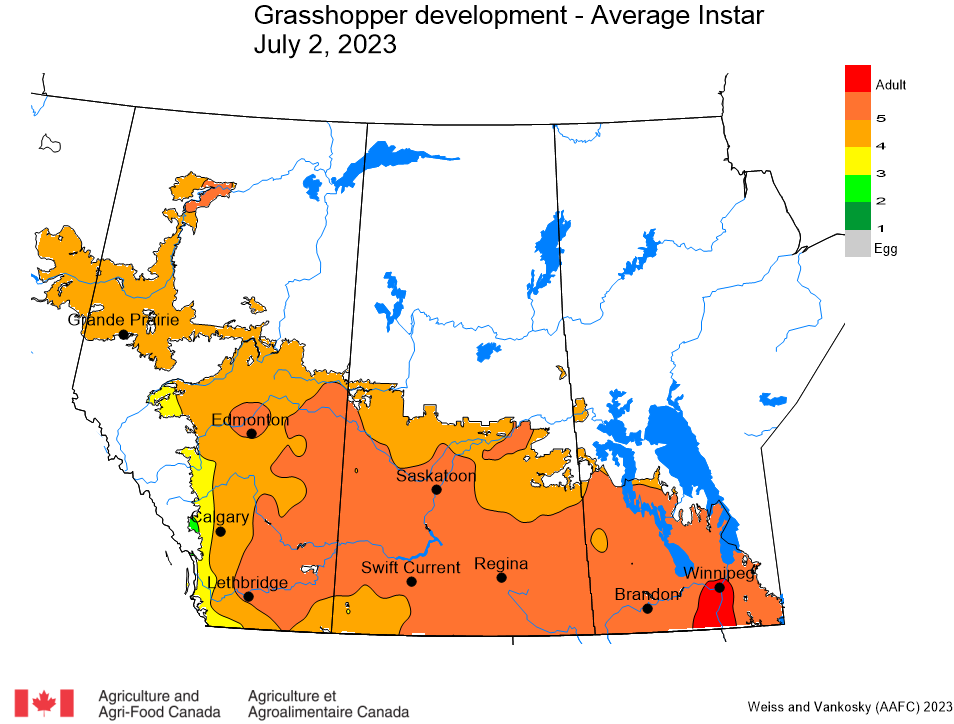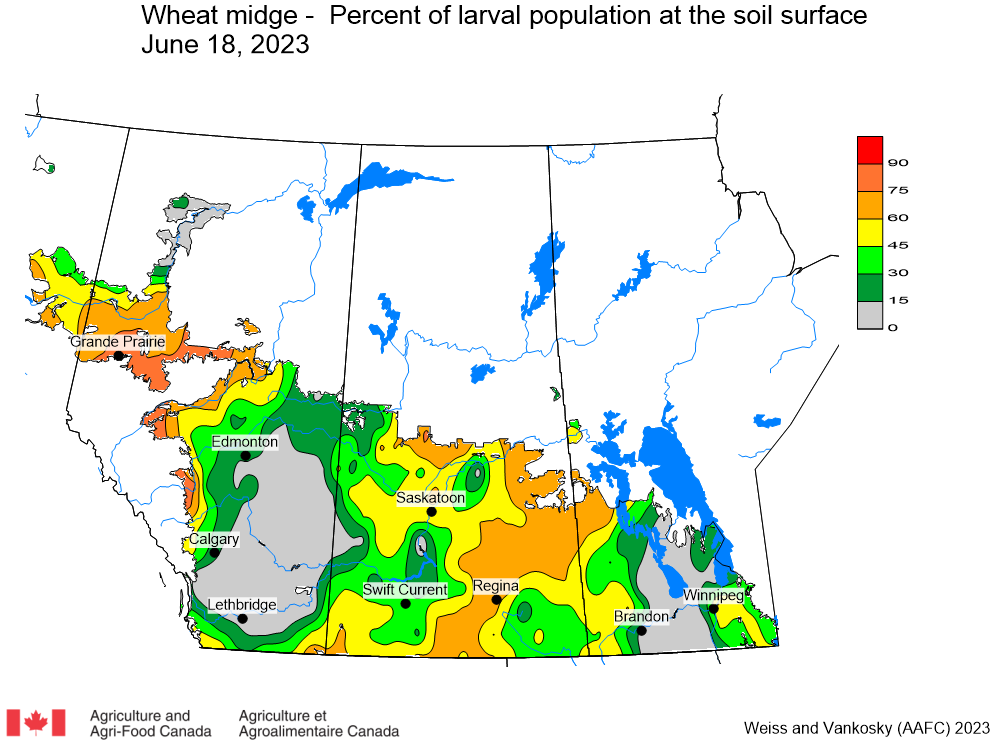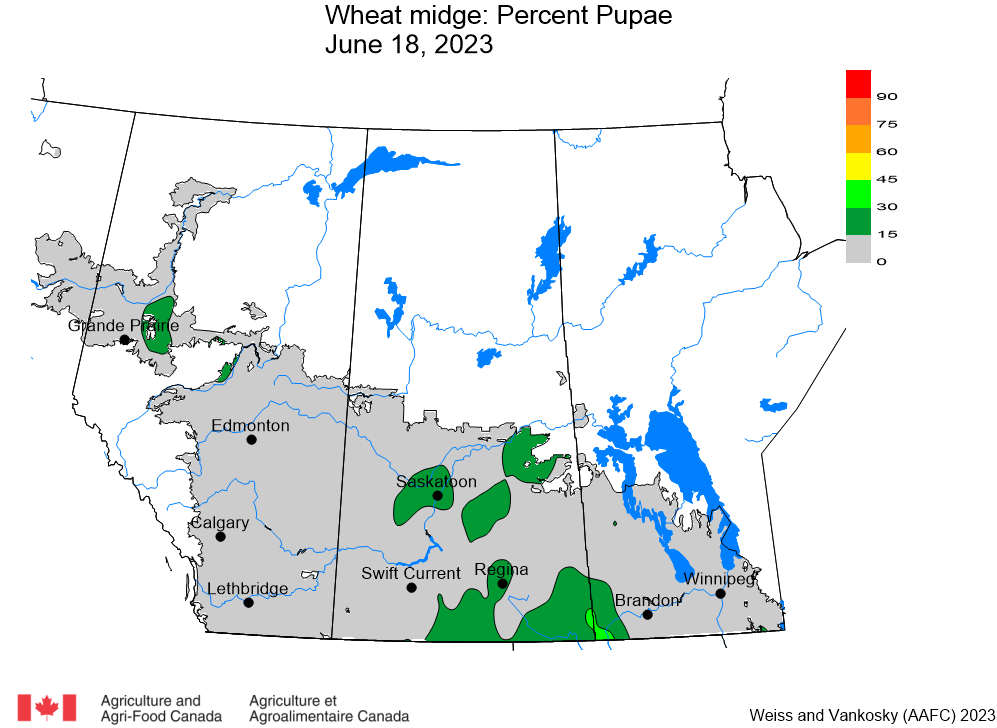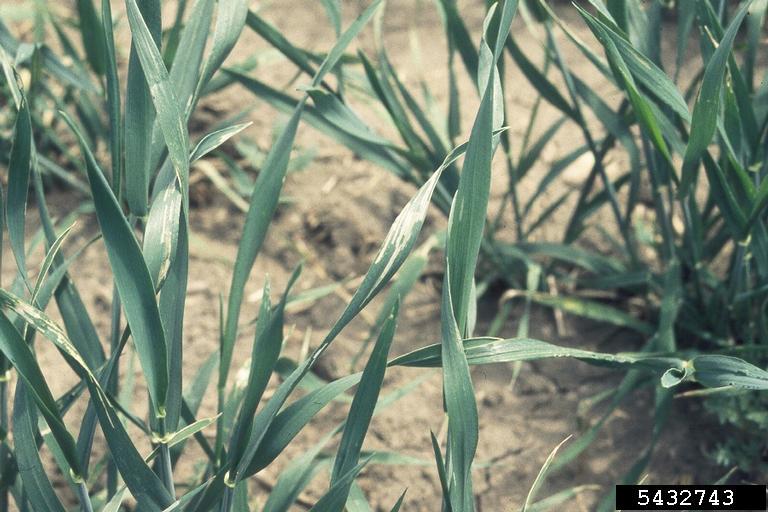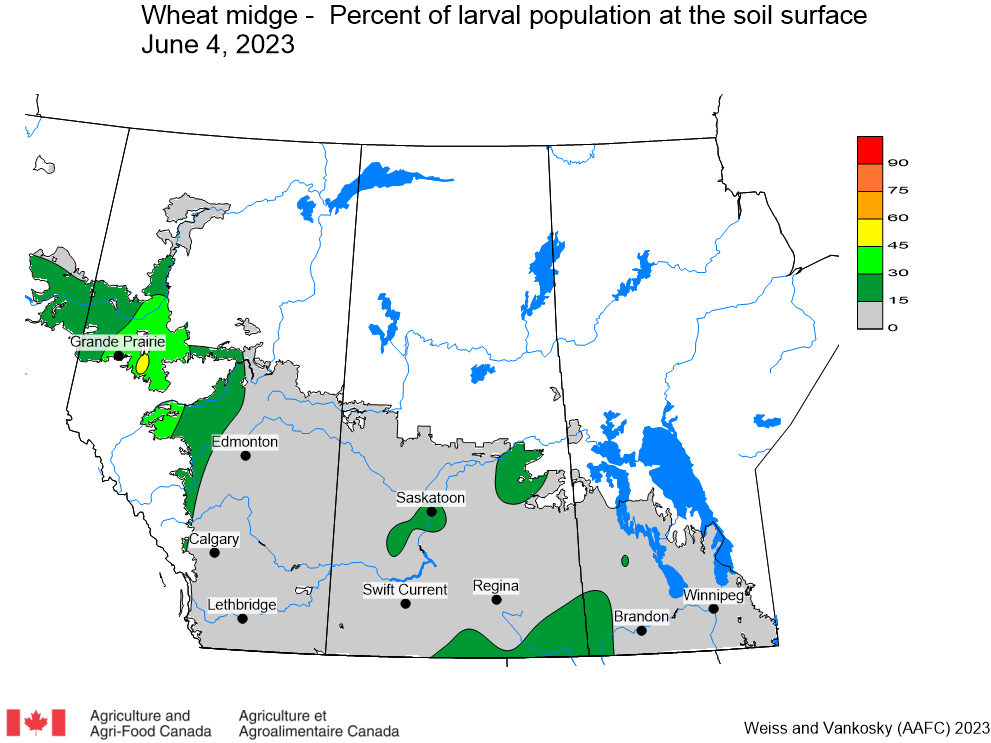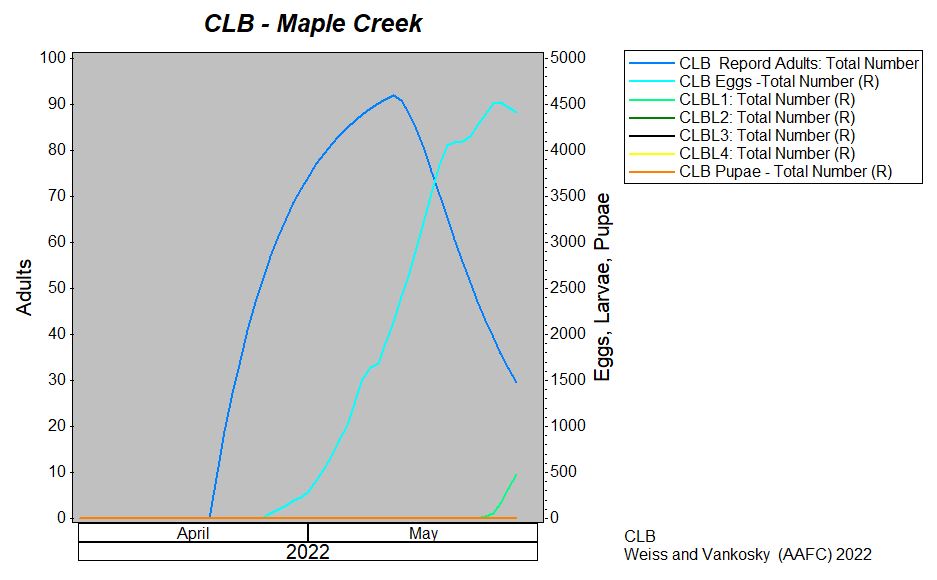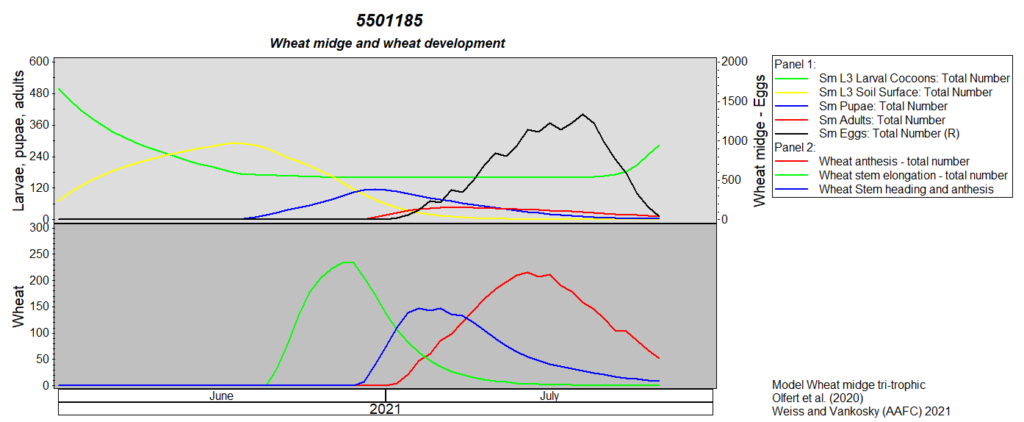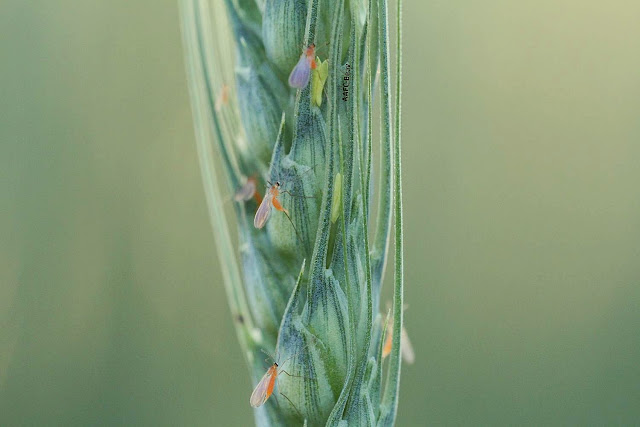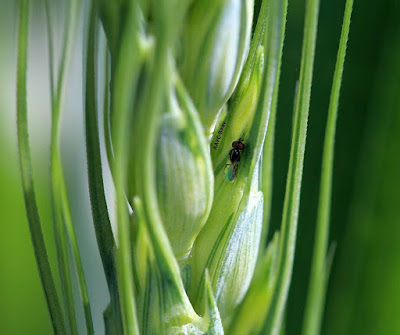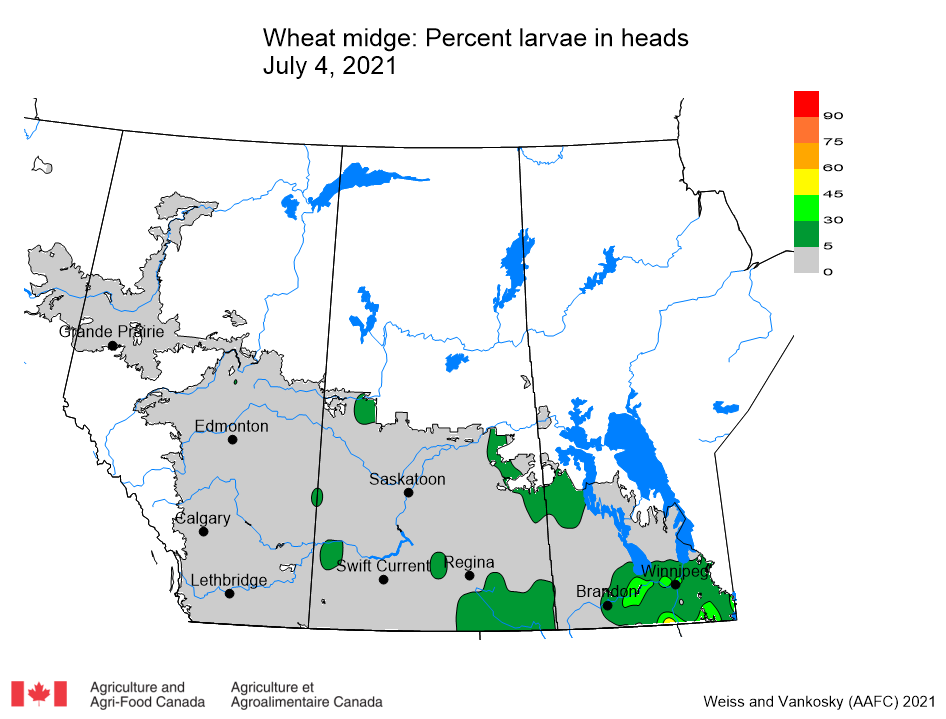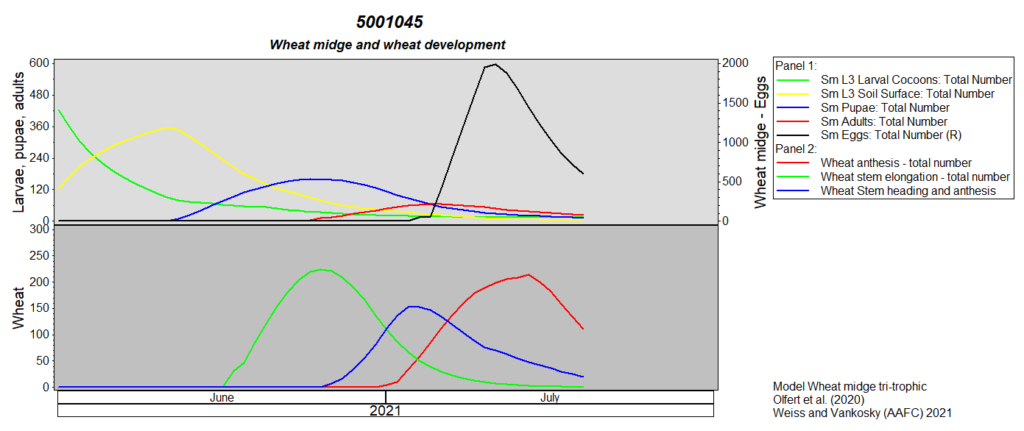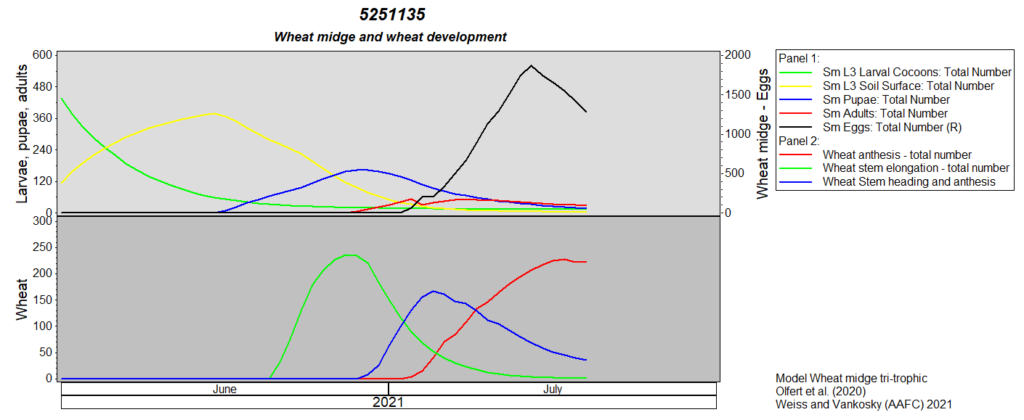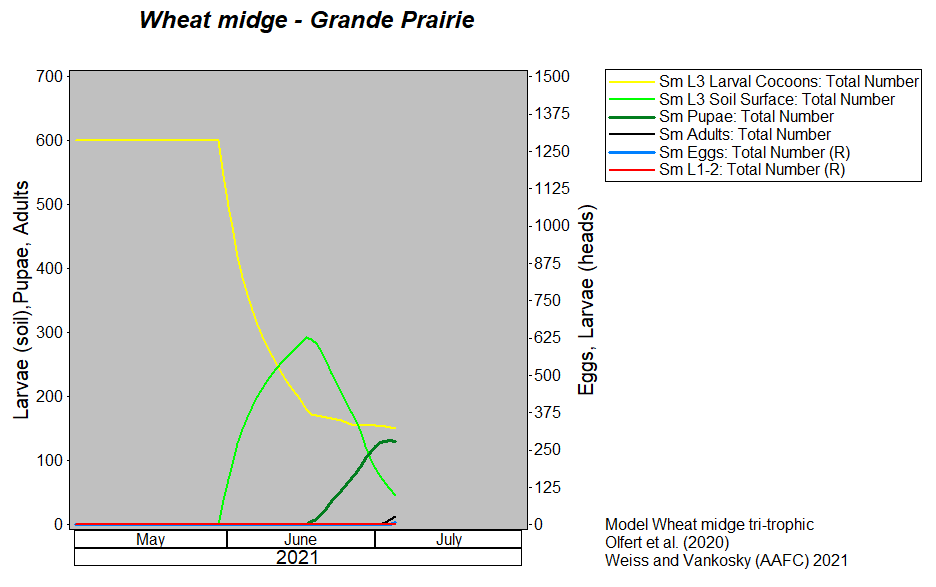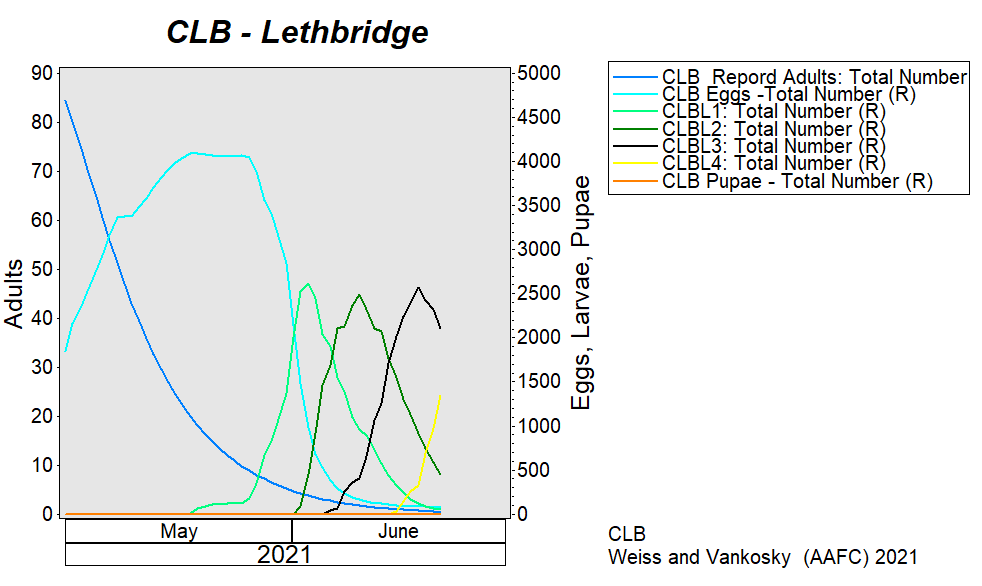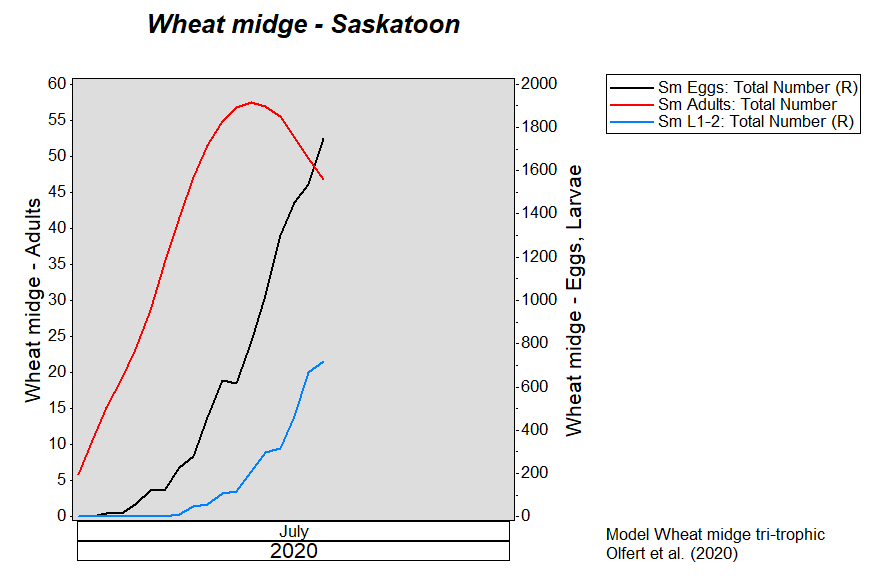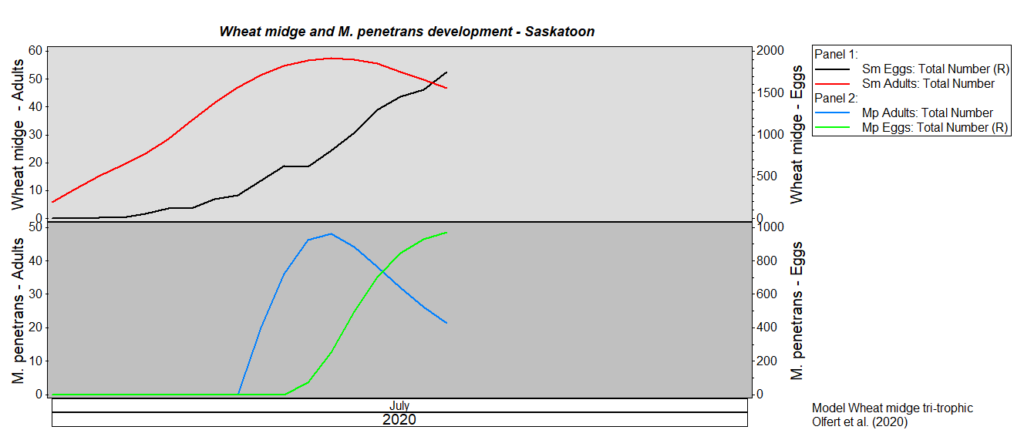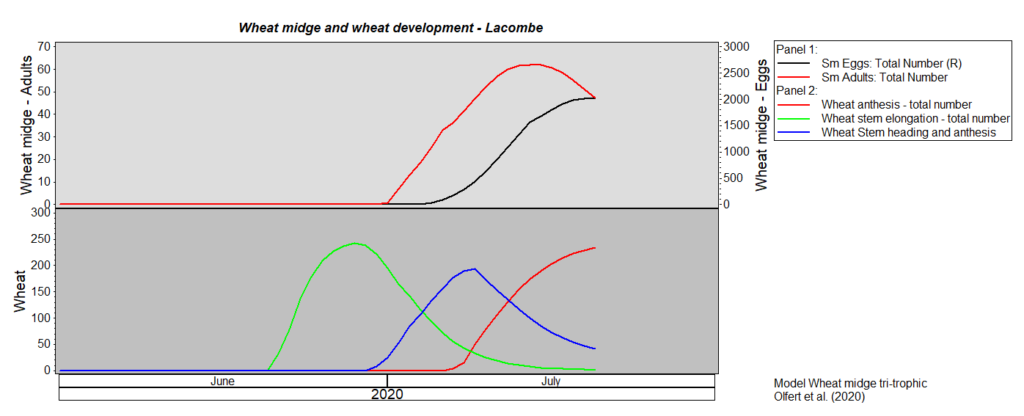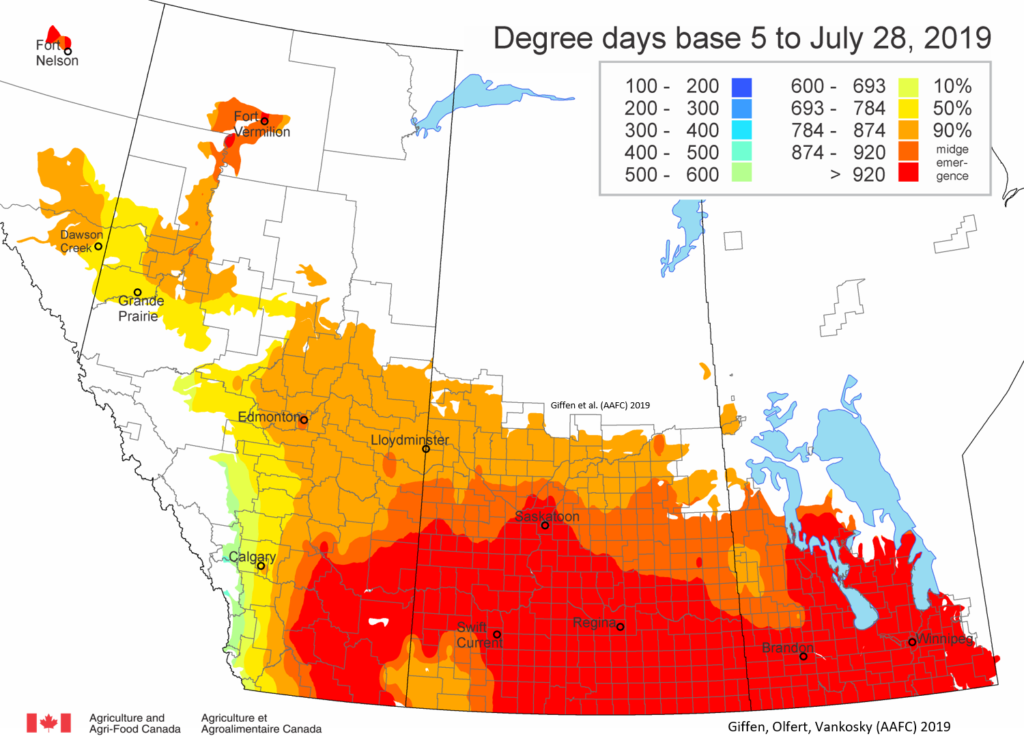The emergence of wheat midge (Sitodiplosis mosellana) needs to be synchronized with the development of wheat heads for successful larval development. One factor that determines the timing of adult wheat midge emergence is spring precipitation. Cumulative rainfall between 25-30 mm in May and June is required for overwintered larval cocoons to complete larval and pupal development in the spring. When cumulative rainfall is below 25-30 mm in May and June, the completion of larval development may be delayed or postponed to future growing seasons, resulting in delayed or erratic adult wheat midge emergence in late June and July.
Cumulative rainfall (May 1-June 29, 2025) across the majority of the Canadian Prairies now exceeds the threshold (30 mm) required to terminate larval diapause.
The model indicates that, where wheat midge populations are present, larvae are beginning to pupate in larger numbers (Fig. 1). Model output suggests that pupae numbers should be highest in the southwest corner of Saskatchewan and around Brandon in Manitoba (Fig. 1).

Please refer to the historical wheat midge survey maps and particularly the 2024 results. Historical survey information paired with updated predictive model outputs help identify areas at risk of wheat midge damage in 2025.
In-Field Monitoring: When scouting wheat fields, pay attention to the synchrony between flying midge and anthesis. In-field monitoring for wheat midge should be carried out in the evening (preferably after 8:30 pm or later) when the female midges are most active. On warm (at least 15 ºC), calm evenings, the midge can be observed in the field, laying their eggs on the wheat heads (Fig. 3). Midge populations can be estimated by counting the number of adults present on 4 or 5 wheat heads. Inspect the field daily in at least 3 or 4 locations during the evening.


REMEMBER that in-field counts of wheat midge per head remain the basis of the economic threshold decision. Also remember that the parasitoid, Macroglenes penetrans (Fig. 4), is actively searching for wheat midge at the same time. Preserve this parasitoid whenever possible and remember insecticide control options for wheat midge also kill these beneficial insects who help reduce midge populations.
Economic Thresholds for Wheat Midge:
a) To maintain optimum No. 1 grade: 1 adult midge per 8 to 10 wheat heads during the susceptible stage.
b) To maintain yield only: 1 adult midge per 4 to 5 heads. At this level of infestation, wheat yields will be reduced by approximately 15% if the midge is not controlled.
Inspect the developing kernels for the presence of larvae and larval damage.
Wheat midge was featured as the Insect of the Week in 2023 (for Wk08). Be sure to also review wheat midge and its doppelganger, the lauxanid fly, featured as the Insect of the Week in 2019 (for Wk11) – find descriptions and photos to help with in-field scouting! Additionally, the differences between midges and parasitoid wasps were featured as the Insect of the Week in 2019 (for Wk12). Remember – not all flying insects are mosquitoes nor are they pests! Many are important parasitoid wasps that regulate insect pest species in our field crops OR pollinators that perform valuable ecosystem services!
Information related to wheat midge biology and monitoring can be accessed by linking to your provincial fact sheet (Saskatchewan Ministry of Agriculture or Alberta Agriculture & Irrigation). Alberta Agriculture & Irrigation has a YouTube video describing in-field monitoring for wheat midge. The Prairie Pest Monitoring Network’s wheat midge monitoring protocol is also available.
Additional information can be accessed by reviewing the Wheat midge pages extracted from the “Field Crop and Forage Pests and their Natural Enemies in Western Canada: Identification and Field Guide” (2018) accessible as a free downloadable PDF in either English or French on our new Field Guides page.






